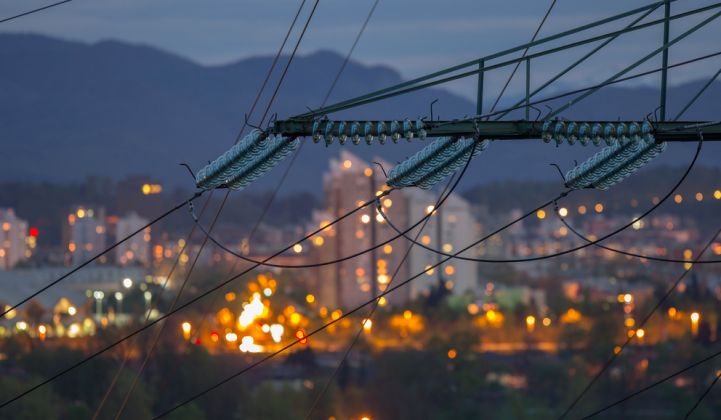A Scottish research center has validated the performance claims of a mysterious grid technology being commercialized by a company called Faraday Grid.
The Power Networks Demonstration Centre (PNDC), at the University of Strathclyde in Glasgow, said Faraday Grid’s Exchanger technology lived up to its goals of improving power quality and reducing losses on distribution networks.
“A total of 16 tests were carried out for the unit under test (UUT) and the recorded measurements indicate an improvement in the quality of the voltage for the load connected at the output of the prototype,” said the PNDC in a 25-page confidential test report.
The tests consisted of under-voltage, over-voltage, dips, swells, harmonics, flicker and square waves at the input of the Faraday Exchanger unit, the report said. The Faraday Exchanger outperformed a traditional transformer in all the tests, said the PNDC.
However, “the UUT was under the operational control of Faraday Grid Limited due to the intellectual property protection requirements,” the report noted.
The PNDC describes itself as “a venture founded by government, industrial and academic partners with the aim of accelerating the adoption of innovative research and technologies from early-stage research into business-as-usual adoption by the electricity industry.”
The center says it has carried out 108 projects to date, ranging from power network cyberthreat analyses to tests for a 25-kilowatt, 50-kilowatt-hour zinc-bromide redox flow battery from Lotte Chemicals.
In a press release, Edinburgh-based Faraday Grid celebrated the PNDC report as a major step toward commercialization.
"We're delighted that the Faraday Grid Exchanger has been tested against the highest standards in the sector, and found to deliver," said Andrew Scobie, founder and CEO, in the press note.
"As we move toward commercial deployment, we're excited to be working with world-leading researchers at the PNDC to bring our revolutionary technology as quickly as possible to market."
The company claimed that no other technology under development could deliver the range of capabilities that Faraday Grid's Exchanger technology offers.
Wide adoption of Faraday Grid's technology across an energy network or grid system could significantly improve power quality and reliability, increase equipment lifetimes and reduce capital investment in mitigation technologies, the company said.
The press statement also revealed that Faraday Grid has become a member of the PNDC.
Commercial terms were not disclosed, but Faraday Grid said it would be working with the PNDC to further refine and develop the Exchanger technology as it moves toward commercial deployment.
“The membership agreement is a commitment between leading researchers at the PNDC and technical experts at Faraday Grid to work together over the next three years to bring the Exchanger technology toward commercial deployment,” said the press release.
Representatives from Faraday Grid and the PNDC were not available for comment at the time of going to press. The PNDC tests, completed in April, followed a public unveiling of a live prototype of the Exchanger in December last year.
The demonstration showed how the Exchanger could remove harmonics and control voltage, frequency and power factor to smooth out some of the problems that might arise from assimilating intermittent renewable energy on the grid.
At the time, Faraday Grid said it would be testing the Exchanger in the first phase of Australia’s largest solar project, in Lower Wonga, Gympie, this year.
The company claims the Faraday Exchanger’s capabilities will help grids adapt to renewable penetrations in excess of 30 percent and up to as much as 60 percent.
Exactly how the Exchanger works is a closely guarded secret, although Faraday Grid has likened the technology to an internet router that adjusts power flows instead of data traffic.
The Exchangers are intended to work together to cut grid losses by up to 15 percent and will be sold to electricity network operators as a replacement for traditional transformers.
When they go on sale, Faraday Exchangers will cost $6,500 per unit in the U.S. and around $10,000 per unit in Europe, to account for differences between European and American grids.
Speaking to GTM last December, Scobie said he understood Faraday Grid’s reluctance to open up the Exchanger to public scrutiny could lead to doubts over the technology.
“But we’re not in bed with Scottish Power, U.K. Power Networks, Amp and the investors that we have because we’re pulling some Ponzi scheme here,” he countered.




